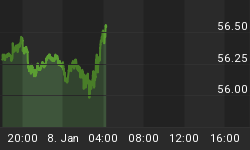Apple is no longer about iPhones, and while iPhone sales figures have stubbornly continued to shape investor sentiment, the plan was always a monumental shifting of gears to services, which promises to be much bigger than devices down the road.
Now it’s about streaming, and it’s even about a new Apple Credit Card, both unveiled yesterday at a high-profile Apple event.
The rule of thumb is that when Apple enters any space, everybody is watching. But this time, Apple’s debut into streaming isn’t about transforming the market—it’s about mission creep, and in some cases, it’s about playing catch-up (like it did with its music service, Apple Music).
At a press event Monday afternoon, Apple management announced the fall launch of its paid, ad-free video portal for its own original movies and TV shows called Apple TV+.
Apple has not yet revealed a price for it or said exactly how many shows it will have at launch but some analyst estimates have indicated that it could be slightly more expensive than the cheapest Netflix, Hulu, and Prime Video subscriptions, which are all around $8 per month.
While Apple will reportedly spend some $1 billion on its own content, its streaming service is more of a Trojan Horse that will bring together a handful of existing services, including HBO, Starz, and Showtime as well.
How has recruitment gone so far? So, so.
The Apple TV app will support over 150 streaming apps, including Amazon Prime and Hulu, as well as DIRECTV NOW and PlayStation Vue. But Netflix isn’t playing ball.
In 2006, Apple was actually one of the first to offer paid-for videos on its iTunes, but then things stalled, and now it’s entering an already-crowded streaming market.
Netflix, meanwhile, has more than 148 million subscribers globally, followed by Amazon with more than 100 million people subscribed to its Prime service. Other streaming services such as Hulu are relatively small by comparison, but even they have some 25 million subscribers in the U.S.
Most recently, NBC announced its own streaming service, which could launch as early as May.
Disney and Warner Media are also due to launch streaming platforms later this year. And just last week, Disney concluded a $71.3-billion mega-merger with Century Fox.
The big question is whether Apple lagged behind on purpose. After all, one of the most annoying aspects of all the streaming services is that customers have to have multiple accounts to watch everything they want. They’ve been waiting for someone to come in and bring it all under a single umbrella.
Will that be Apple? Well, not yet—and not without Netflix.
Related: Lyft IPO: Get Ready For A Bumpy Ride
But it’s worth keeping in mind that even though competition is strong and established, Apple has an extremely loyal customer base. Also, while Apple it is hoping to attract some of its competitors' subscribers, there are millions of newcomers in the form of ex-cable users.
The Wall Street Journal recently reported that more than three million customers in the US canceled their cable TV or satellite subscriptions in the last quarter of 2018, making that a total of 10 million since 2010.
Apple Music, iTunes, and the App Store already make up almost 15 percent of the tech giant's annual revenues — some $37.2 billion in 2018. Apple has reportedly set a target of 100 million subscribers to its streaming service in the first five years. That could add $7 billion to $10 billion to its annual revenues.
Aside from streaming, Apple also announced it was overhauling its news app, called Apple News+. The app is adding more than 300 magazine subscriptions for a monthly subscription price of $9.99. The New York Times and the Washington Post, which have higher-priced monthly subscription programs, reportedly will not be part of the service.
And there’s more, still: The tech giant has also introduced its own credit card, Apple Card, which will come out this summer and will be linked to Goldman Sachs. It will feature both a digital version for Apple devices and a physical card for when Apply Pay isn’t accepted.
All of this may not seem enormously disruptive, but Trojan Horses aren’t immediately obvious, as history has demonstrated.
By Fred Dunkley for Safehaven.com

















